Related Research Articles

The Symphony No. 9 in C major, D 944, known as the Great, is the final symphony completed by Franz Schubert. Originally called The Great C major to distinguish it from his Symphony No. 6, the Little C major, the subtitle is now usually taken as a reference to the symphony's majesty. Unusually long for a symphony of its time, a typical performance of The Great lasts an hour when all repeats indicated in the score are taken. The symphony was not professionally performed until a decade after Schubert's death.
The Piano Concerto, Op. 38, by Samuel Barber was commissioned by the music publishing company G. Schirmer in honor of the centenary of their founding. The premiere was on September 24, 1962, in the opening festivities of Philharmonic Hall, now David Geffen Hall, the first hall built at Lincoln Center in Manhattan, with John Browning as soloist with the Boston Symphony Orchestra conducted by Erich Leinsdorf.
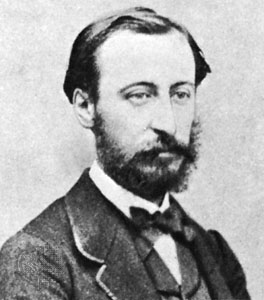
The Piano Concerto No. 4 in C minor, Op. 44 was composed by Camille Saint-Saëns in 1875. It was premièred on October 31, 1875, at the Théâtre du Châtelet of Paris, with the composer as the soloist. The concerto is dedicated to Anton Door, a professor of piano at the Vienna Conservatory. It continues to be one of Saint-Saëns' most popular piano concertos, second only to the Piano Concerto No. 2 in G minor.
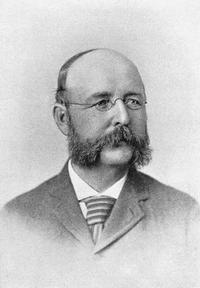
John Knowles Paine was the first American-born composer to achieve fame for large-scale orchestral music. The senior member of a group of composers collectively known as the Boston Six, Paine was one of those responsible for the first significant body of concert music by composers from the United States. The Boston Six's other five members were Amy Beach, Arthur Foote, Edward MacDowell, George Chadwick, and Horatio Parker.
The Young Person's Guide to the Orchestra, Op. 34, is a 1945 musical composition by Benjamin Britten with a subtitle Variations and Fugue on a Theme of Purcell. It was based on the second movement, "Rondeau", of the Abdelazer suite. It was originally commissioned for the British educational documentary film called Instruments of the Orchestra released on 29 November 1946, directed by Muir Mathieson and featuring the London Symphony Orchestra conducted by Malcolm Sargent; Sargent also conducted the concert première on 15 October 1946 with the Liverpool Philharmonic in the Philharmonic Hall, Liverpool, England.

Anton Bruckner's Symphony in F minor, WAB 99, was written in 1863, at the end of his study period in form and orchestration by Otto Kitzler.

The Symphony No. 1 in B♭ major, Op. 38, also known as the Spring Symphony, is the first completed symphonic work composed by Robert Schumann.
Franz Schubert's Symphony No. 3 in D major, D 200, was written between 24 May and 19 July 1815, a few months after his eighteenth birthday. Like the other early symphonies, it was not published during Schubert's lifetime. It appeared many years later, in the first Schubert complete works edition in 1884. It is scored for 2 flutes, 2 oboes, 2 clarinets, 2 bassoons, 2 horns, 2 trumpets, timpani and strings.
The Symphony in E, first performed on March 10, 1866, was the only symphony composed by Arthur Sullivan. Since Sullivan's death, it has frequently been called the "Irish" Symphony as it was composed in Ireland, and as a homage to Mendelssohn's "Scottish Symphony".
Symphony No. 2 in A major, subtitled Im Frühling or In Spring, is the second symphony by American composer John Knowles Paine.
The Symphony in C major, WWV 29, from 1832 is the only completed symphony of Richard Wagner.

Georg Philipp Telemann's 12 fantaisies à traversière sans basse, 12 Fantasias for Solo Flute, TWV 40:2–13, were published in Hamburg in 1732–33. An extant copy of the publication, conserved in Brussels, has a spurious title page reading Fantasie per il Violino senza Basso. The set is one of Telemann's collections of fantasias for unaccompanied instruments, the others being a set of thirty-six for harpsichord, also published in 1732–33, and two sets published in 1735: twelve for solo violin and twelve for viola da gamba.
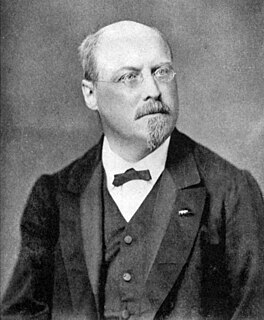
Symphony No. 1 in D major, An das Vaterland, Op. 96, was composed by Joachim Raff between 1859 and 1861.

Orchestral Works by Tomas Svoboda is a classical music album by the Oregon Symphony under the artistic direction of James DePreist, released by the record label Albany in 2003. The album was recorded at the Arlene Schnitzer Concert Hall in Portland, Oregon during three performances in January and June 2000. It contains three works by Tomáš Svoboda, a Czech-American composer who taught at Portland State University for more than 25 years: Overture of the Season, Op. 89; Concerto for Marimba and Orchestra, Op. 148; and Symphony No. 1, Op. 20. The album's executive producers were Peter Kermani, Susan Bush, and Mark B. Rulison; Blanton Alspaugh served as the recording producer.
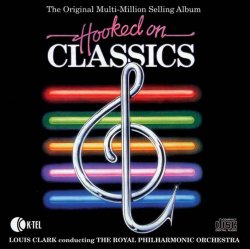
Hooked on Classics, produced by Jeff Jarratt and Don Reedman, is a multi-million selling album recorded by Louis Clark and the Royal Philharmonic Orchestra, published in 1981 by K-tel and distributed by RCA Records, part of the Hooked on Classics series.
Symphony No. 1 in B-flat major was the first symphony composed by Charles Villiers Stanford an Irish composer, music teacher, and conductor. It was written in 1876 to compete for a prize offered by the proprietors of the Alexandra Palace. It came second out of 46 entries earning a prize of £5. The symphony was dedicated to the tenor Arthur Duke Coleridge who had been a friend of Stanford's at Cambridge. It was first played at The Crystal Palace in London in 1879 but was never published or performed again in Stanford's lifetime.
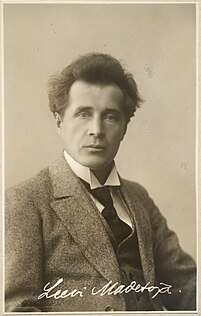
The Symphony No. 1 in F major, Op. 29, is a three-movement orchestral composition by the Finnish composer Leevi Madetoja, who wrote the piece from 1914–16 at the dawn of his professional career. Although late-Romantic in style, the symphony carefully eschews the extravagance and overindulgence typical of debut efforts, placing it among the most "mature" and restrained of first symphonies. Accordingly, the First is the shortest and most concentrated of Madetoja's three essays in the form and is the only one of his symphonies not to adhere to the traditional four-movement symphonic template.
The Symphony No. 3 is a composition for orchestra by the American composer Ned Rorem. The work was first performed by the New York Philharmonic under the direction of Leonard Bernstein at Carnegie Hall on April 16, 1959.
Aram Khachaturian's Violin Concerto in D minor is a violin concerto in three movements composed in 1940. It was composed for David Oistrakh and was premiered on November 16, 1940 by Oistrakh.
Symphony No. 6 by Russian composer Alfred Schnittke was composed in 1992. It was commissioned by cellist and conductor Mstislav Rostropovich and the National Symphony Orchestra of Washington, who together gave its first performance in Moscow on 25 September 1993.
References
- 1 2 Steven Ledbetter, Liner Notes to New World Records CD 80374-2 "Symphony No. 1 in C minor, Op. 23;Overture to Shakespeare's “As You Like It”"